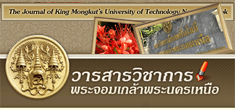Abstract
In this study, various compositions of chitosan/poly(ethylene glycol) blends, with and without crosslinking by glutaraldehyde, were prepared and their potential for use as anti-electrostatic discharge materials was evaluated. Morphology, tensile, and electrical properties of the blends were examined using scanning electron microscopy (SEM), tensile testing, and surface resistivity measurement, respectively. Finally, water contact angle of the blend surface was disclosed. The experimental results showed that chitosan/poly(ethylene glycol) blends were immiscible. Elongation at break of the blends depended on poly(ethylene glycol) content. Introduction of glutaraldehyde crosslinker resulted in higher stiffness and lower flexibility of the blends. Surface resistivity measurements revealed that the blends exhibited the reduction in surface resistivity when poly(ethylene glycol) content and relative humidity increased. Further reduction in surface resistivity of the blends was observed when the blends were crosslinked. The lower water contact angle values reflected the increase in hydrophilicity of blends when poly(ethylene glycol) content increased. In contrast, the polymer blends with higher degree of crosslink showed higher values of water contact angle implying more hydrophobicity..Keywords : Anti-electrostatic discharge materials, Surface resistivity, Water contact angle, Degree of crosslink




